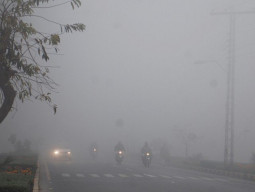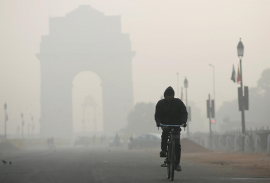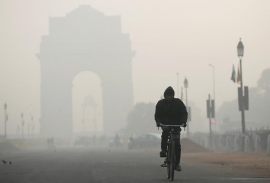
Fog is a natural phenomenon in the winter, but climate change, air pollution and dust have started to produce smog instead. The prevailing circumstances, during the winter months, have left a question mark hanging over the performance of the Punjab Environmental Protection Department.
The sedimentary layer, called smog, rises to about 80 to 130 feet above the ground and makes it difficult for the sun’s rays to reach the earth. The situation eventually starts to irritate the eyes and throats of people in the vicinity.
There is no means to reduce or end this menace in Lahore — or anywhere else in the country — except for rain. This smog situation persists from the late October to November and ends in December after the rains; as has been the case for the past few years.
As Lahore chokes on winter smog, Pakistan moves to cut air pollution
Punjab Environmental Protection Department (PEPD) Deputy Director Muhammad Ali says notices have been issued to 200 factories and Section 144 has been imposed. “Police are taking action against smoke-generating vehicles, while other departments, including the local government, are supporting the pollution campaign to prevent smog,” he said. Ali adds there is no method to reduce smog or eliminate it altogether, while authorities are trying their best to control pollution.
PEPD officers have started taking action against owners of smoke-emitting factories, vehicles and brick kilns across the province.
According to statistics, there are more than 10,000 factories polluting the air with their smoke in the 36 districts of the province. At these manufacturing units, not only the smoke, but plastic being burnt by them is proving hazardous for human health. The most affected cities are Lahore, Gujranwala and Sheikhupura.
There are about 800 steel mills, furnace oil factories and brick kilns in Lahore, along with more than 2.2 million vehicles emitting toxic smoke.
Besides, the crop around the city is also adversely affected as it is bereft of sunlight. Observers find it pitiful that workers of government departments burn garbage which causes air pollution. Also, the use of construction material in an open environment causes pollution. Environmental experts stress that in order to solve these problems on a more permanent basis, there is a need for coordination and better performance from the respective departments, including the PEPD.
In preparation for the winter and smog season, Section 144 has been imposed on the burning of crops, garbage and rubber. In addition to this, farmers have been warned to stop the burning of trash.
The traffic police have been tasked to take action against smoke-emitting vehicles. In this respect, the Punjab Education Department will launch awareness campaigns in schools and colleges to prevent pollution. The PEPD will continue operations against derelict factories and brick kilns.
A deadline was issued to the brick kiln owners to install the latest technology, but not even 10% of them adhered to it. It has been recommended that all government departments fulfill their duty and implement the policies to eliminate pollution. Another worrying factor is that trees have been cut across the province, including Lahore, with complete impunity.
Published in The Express Tribune, October 12th, 2019.




































COMMENTS
Comments are moderated and generally will be posted if they are on-topic and not abusive.
For more information, please see our Comments FAQ